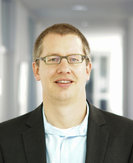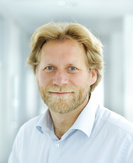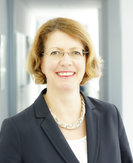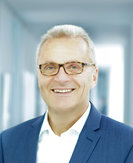Information and communication technologies for promoting and sustaining quality of life, health and self-sufficiency in ageing societies outcomes of the lower saxony research network design of environments for ageing (GAL)
Haux, Reinhold and Hein, Andreas and Kolb, Gerald and Künemund, Harald and Eichelberg, Marco and Appell, Jens E and Appelrath, Hans-Jürgen and Bartsch, Christian and Bauer, Jürgen and Becker, Marcus and Bente, Petra and Bitzer, Jörg and Boll, Susanne and Büsching, Felix and Dasenbrock, Lena and Deparade, Riana and Deppner, Dominic and Elbers, Katharina and Fachinger, Uwe and Felber, Juliane and Feldwieser, Florian and Forberg, Anne and Gietzelt, Matthias and Goetze, Stefan and Gövercin, Mehmet and Helmer, Axel and Herzke, Tobias and Hesselmann, Tobias and Heuten, Wilko and Huber, Rainer and Hülsken-Giesler, Manfred and Jacobs, Gerold and Kalbe, Elke and Kerling, Arno and Klingenberg, Timo and Költzsch, Yvonne and Lammel-Polchau, Christopher and Ludwig, Wolfram and Marschollek, Michael and Martens, Birger and Meis, Markus and Meyer, Eike Michael and Meyer zu Schwabedissen, Hubertus and Moritz, Niko and Müller, Heiko and Nebel, Wolfgang and Neyer, Franz J. and Okken, Petra-Karin and Rahe, Julia and Remmers, Hartmut and Rölker-Denker, Lars and Schilling, Meinhard and Schöpke, Birte and Schröder, Jens and Schulze, Gisela and Schulze, Mareike and Siltmann, Sina and Song, Bianying and Spehr, Jens and Steen, Enno-Edzard and Steinhagen-Thiessen, Elisabeth and Tanschus, Nele-Marie and Tegtbur, Uwe and Thiel, Andreas and Thoben, Wilfried and van Hengel, Peter and Wabnik, Stefan and Wegel, Sandra and Wilken, Olaf and Winkelbach, Simon and Wist, Thorben and Wolf, Klaus-Hendrik and Wolf, Lars and Zokoll-van der Laan, Melanie
Informatics for Health and Social Care
Many societies across the world are confronted with demographic changes, usually related to increased life expectancy and, often, relatively low birth rates. Information and communication technologies (ICT) may contribute to adequately support senior citizens in aging societies with respect to quality of life and quality and efficiency of health care processes. For investigating and for providing answers on whether new information and communication technologies can contribute to keeping, or even improving quality of life, health and self-sufficiency in ageing societies through new ways of living and new forms of care, the Lower Saxony Research Network Design of Environments for Ageing (GAL) had been established as a five years research project, running from 2008 to 2013. Ambient-assisted living (AAL) technologies in personal and home environments were especially important. In this article we report on the GAL project, and present some of its major outcomes after five years of research. We report on major challenges and lessons learned in running and organizing such a large, interand multidisciplinary project and discuss GAL in the context of related research projects. With respect to research outcomes, we have, for example, learned new knowledge about multimodal and speech-based human–machine-interaction mechanisms for persons with functional restrictions, and identified new methods and developed new algorithms for identifying activities of daily life and detecting acute events, particularly falls. A total of 79 apartments of senior citizens had been equipped with specific ‘‘GAL technology’’, providing new insights into the use of sensor data for smart homes. Major challenges we had to face were to deal constructively with GAL’s highly inter- and multidisciplinary aspects, with respect to research into GAL’s application scenarios, shifting from theory and lab experimentation to field tests, and the complexity of organizing and, in our view, successfully managing such a large project. Overall it can be stated that, from our point of view, the GAL research network has been run successfully and has achieved its major research objectives. Since we now know much more on how and where to use AAL technologies for new environments of living and new forms of care, a future focus for research can now be outlined for systematically planned studies, scientifically exploring the benefits of AAL technologies for senior citizens, in particular with respect to quality of life and the quality and efficiency of health care.
9 / 2014
article
166-187
GAL
Lower Saxony Research Network Design of Environments for Ageing
Lower Saxony Research Network Design of Environments for Ageing
39






